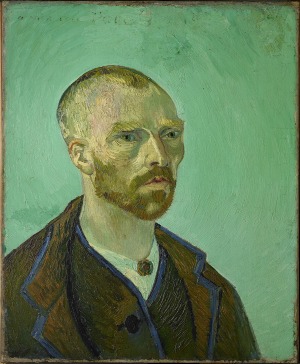The exhibition I feature here doesn’t open until Sept. 14, but this is the summer doldrums, and hey there’s not much else going, despite some promises to the contrary. (I would be happy to be contradicted on that reference.)
 So let’s look at the Clyfford Still Museum, in Denver, which opened last November. As I wrote in October, 2011, in an article for the Wall Street Journal about the museum,
So let’s look at the Clyfford Still Museum, in Denver, which opened last November. As I wrote in October, 2011, in an article for the Wall Street Journal about the museum,
Creating a constituency for a one-artist museum can be tricky even when, like Georgia O’Keeffe or Andy Warhol, that artist is widely known (and loved) and has a local base (Santa Fe, N.M., and Pittsburgh, respectively). Still, a loner who was born in North Dakota in 1904 and died in Maryland in 1980, with several stops in between, had decreed that his life’s work should go to any city that would erect a museum solely for his works—and nothing else, ever.
And that turned out to be Denver. So how is Dean Sobel, the museum’s director, going to pull off Vincent/Clyfford — “a focused exhibition exploring connections between Vincent Van Gogh and Clyfford Still—in particular those found during the initial decades of the latter’s career,” according to the press release?
Reproductions and “interpretive material.” The exhibition itself will feature about 20 of Still’s paintings and works on paper, all executed between the late 1920s and the 1930s. They expose, we’re told, “direct parallels with Van Gogh’s preferred subject matter—including vignettes of agrarian labor, moody landscapes treated as soul-scapes, and dark interior scenes—as well as his use of the grotesque to accentuate the plight of human beings living on the edge.”
 Still apparently identified with van Gogh because of his bare-bones childhood on farms in Canada, where he did manual labor, like the peasants van Gogh depicted. “Cycles of growth, decay, and rebirth in their work are evoked in their through recurrent symbols such as corn, the sun, and the sower,” the museum says. “Still’s paintings also echo Van Gogh’s in their rich color palette and heavily troweled painterly surfaces.”
Still apparently identified with van Gogh because of his bare-bones childhood on farms in Canada, where he did manual labor, like the peasants van Gogh depicted. “Cycles of growth, decay, and rebirth in their work are evoked in their through recurrent symbols such as corn, the sun, and the sower,” the museum says. “Still’s paintings also echo Van Gogh’s in their rich color palette and heavily troweled painterly surfaces.”
I credit Sobel and adjunct curator David Anfam for coming up with the theme. They have discovered a very good, direct pairing of a 1936 painting by Still with van Gogh’s Two Peasants Digging, from 1889, illustrated on the press release, which I encourage you to view.
I asked for more and received PH-418, from 1936, above left, which is paired with Van Gogh’s marvelous Night Cafe, 1888, from the Yale  University Art Gallery, at right. Interesting.
 The museum is also pairing Still’s now-famous Self-Portrait from 1940 (which you will find on this webpage) with van Gogh’s Self-Portrait Dedicated to Paul Gauguin, 1888, from the Harvard University Art Museums, bottom left.
The museum is also pairing Still’s now-famous Self-Portrait from 1940 (which you will find on this webpage) with van Gogh’s Self-Portrait Dedicated to Paul Gauguin, 1888, from the Harvard University Art Museums, bottom left.
Based on this information — one never knows until one sees an exhibition — I give the Still museum credit for trying and being enterprising. It’s a good theme.
But I think Still made a huge, egotistical mistake — preventing comparisons of works by other artists side-by-side doesn’t make him look better, it makes him look afraid. Wouldn’t this have been far more interesting if the van Gogh works were actually present, instead of there in reproductions?
Photo Credits: Courtesy of the Clyfford Still Museum (top); ©  the Yale University Art Gallery (middle); © the Fogg Art Museum, Harvard Art Museums (bottom).
